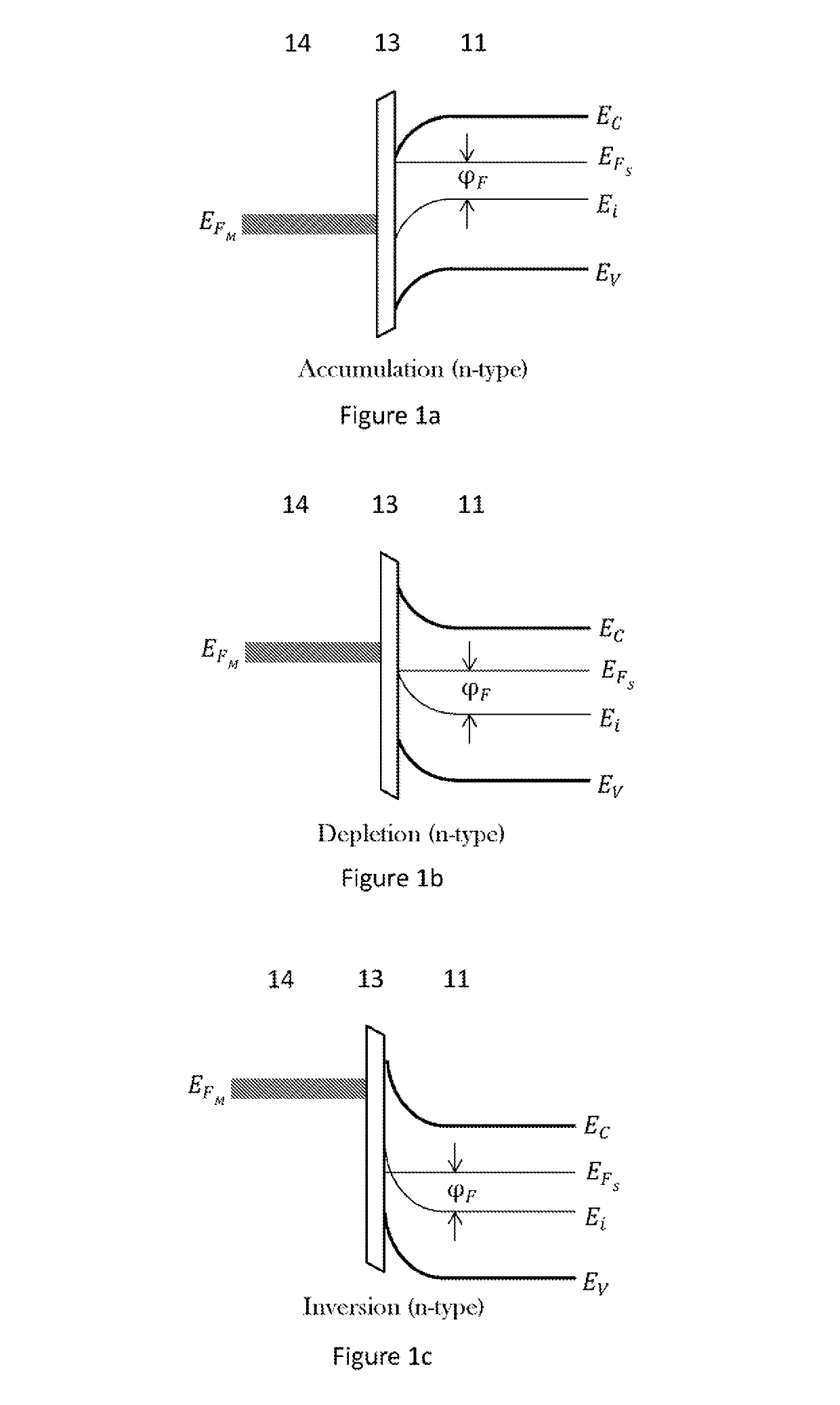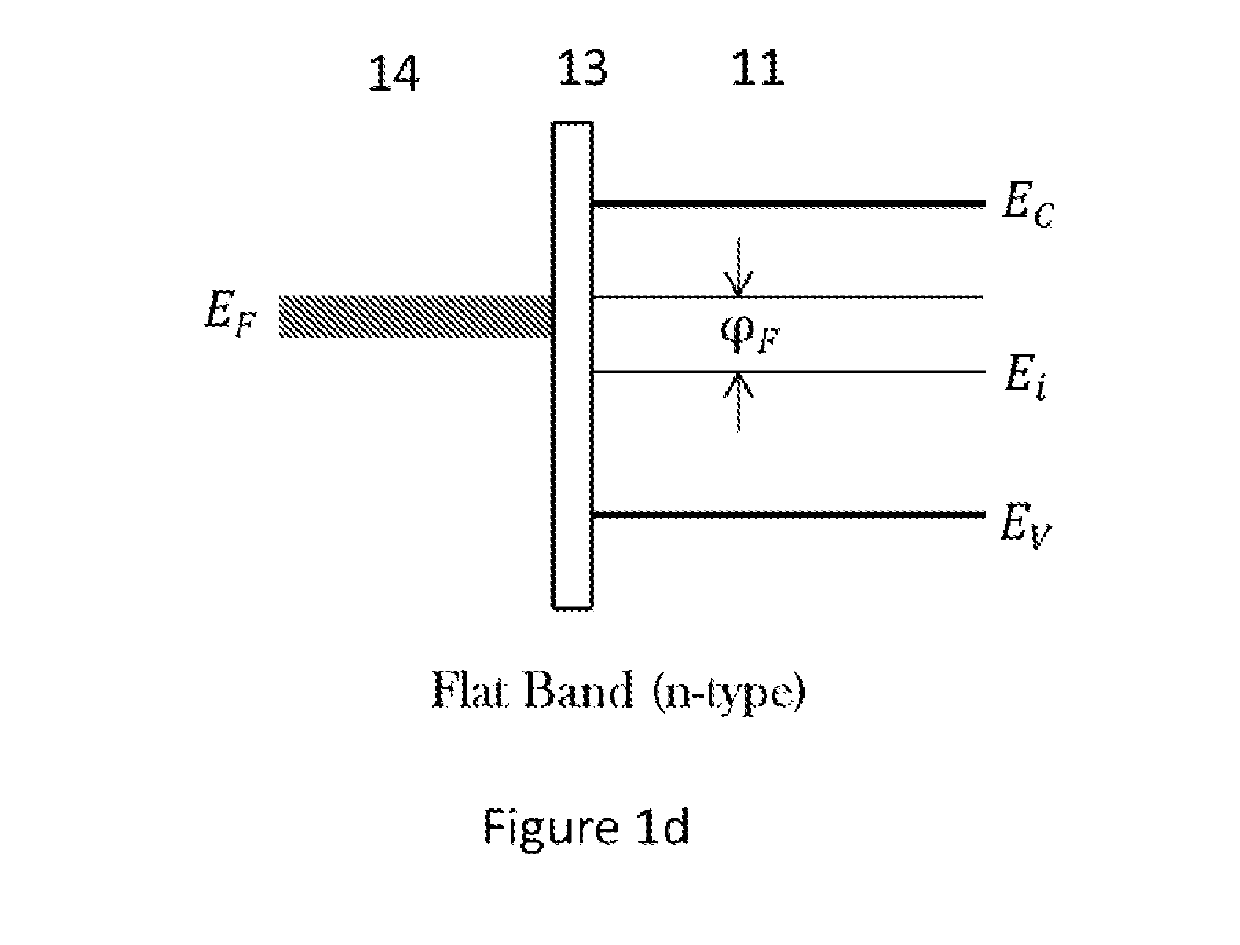Photosensitive device with electric shutter
a technology of photosensitive devices and shutters, applied in the direction of photometry using electric radiation detectors, optical radiation measurement, instruments, etc., can solve the problems of inability to achieve mechanical shutters, inability to prepare two separate elements in one pixel, and inability to achieve photodetector applications, etc., to facilitate the use of cds methods and high frame rate
- Summary
- Abstract
- Description
- Claims
- Application Information
AI Technical Summary
Benefits of technology
Problems solved by technology
Method used
Image
Examples
first device embodiment
[0050]The photosensitive device may be a transistor which comprises at least one electrically conducting source electrode and at least one electrically conducting drain electrode in contact with the ambipolar two-dimensional material. When the device is a transistor, the control unit may be configured to apply a source-drain voltage between the at least one source electrode and the at least one drain electrode. Alternatively, the control unit may be configured to measure the electric potential of the ambipolar two-dimensional material through the source electrode and / or the drain electrode.
[0051]FIG. 2 illustrates an exemplary photosensitive transistor according to this first device embodiment. The transistor comprises a layer of photoactive semiconducting material 21, a graphene channel 22, a gate insulator 23, a bottom gate electrode 241 and a top gate electrode 242. The transistor further comprises two source electrodes 261 and 262, and two drain electrodes 263 and 264. The devic...
second device embodiment
[0063]The photosensitive device may be a voltage-mode device which comprises a single-ended measurement electrode in contact with the ambipolar two-dimensional material. The control unit may be configured to measure the electric potential of the ambipolar two-dimensional material through the measurement electrode. In this embodiment, source and drain electrodes are not used because no current needs to be driven through the ambipolar two-dimensional material.
[0064]FIG. 3 illustrates a voltage-mode device which comprises a photoactive semiconducting material 31, a graphene sensing electrode 32, a bottom gate electrode 341 and a top gate electrode 342. A layer of insulating material 33 separates the bottom gate electrode from the graphene sensing electrode 32. A single-ended measurement electrode 38 is used to measure the electric potential of the sensing electrode 32. The gate electrodes define a first region 37. The interface between the photoactive semiconducting material 31 and the...
first measurement embodiment
[0104]When a transistor structure is utilized in the photosensitive device, the control unit may be configured to measure the source-drain current between the at least one source electrode and the at least one drain electrode as the electrical response of the photosensitive device. The control unit may first set the source-drain current through the ambipolar two-dimensional material to an initial value, and the influence of injected charge carriers released by radiation in the photoactive semiconducting layer can then be detected as a deviation in the source-drain current from this initial value. A nearly simultaneous measurement of the dark current when the device is in the light-immune state provides a reference point for the measured photoinduced current, so that measurement noise is reduced in the calculated response. The response can then be used to calculate the intensity of the radiation incident on the photosensitive device after calibration experiments have been performed.
[...
PUM
 Login to View More
Login to View More Abstract
Description
Claims
Application Information
 Login to View More
Login to View More - R&D
- Intellectual Property
- Life Sciences
- Materials
- Tech Scout
- Unparalleled Data Quality
- Higher Quality Content
- 60% Fewer Hallucinations
Browse by: Latest US Patents, China's latest patents, Technical Efficacy Thesaurus, Application Domain, Technology Topic, Popular Technical Reports.
© 2025 PatSnap. All rights reserved.Legal|Privacy policy|Modern Slavery Act Transparency Statement|Sitemap|About US| Contact US: help@patsnap.com



